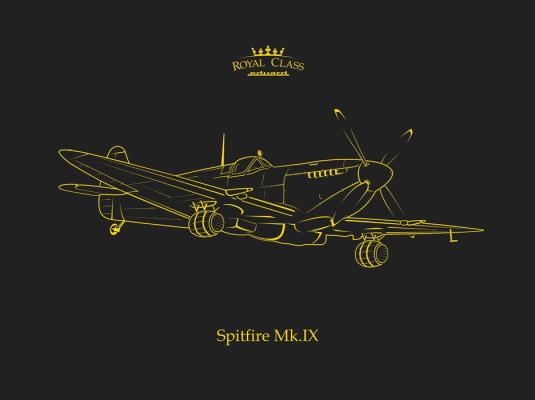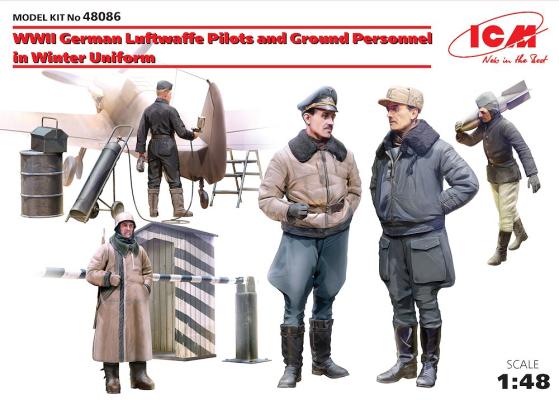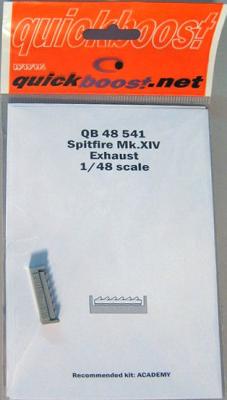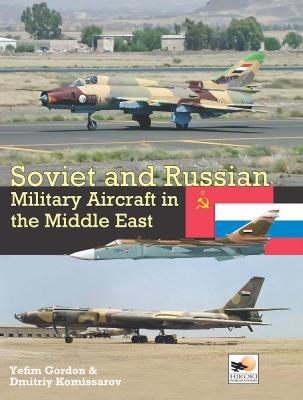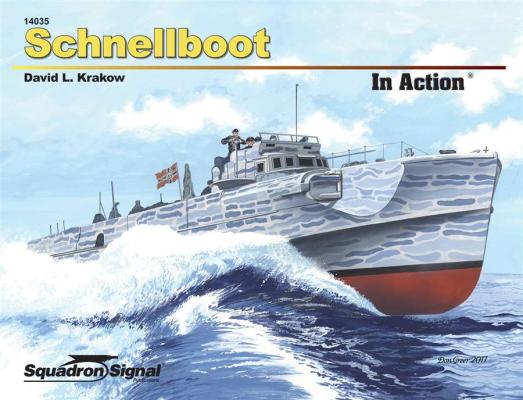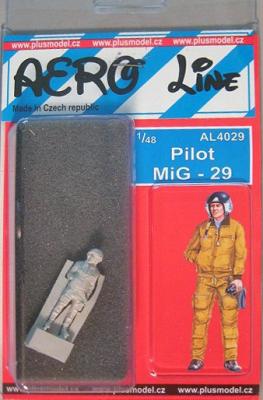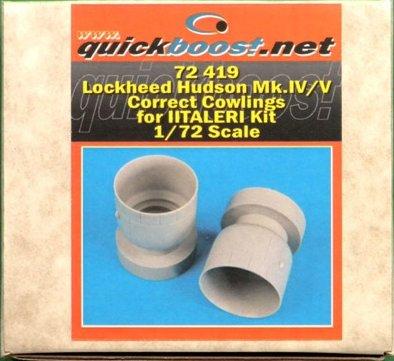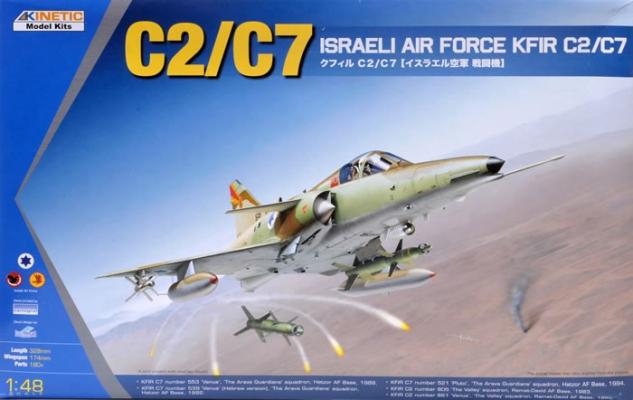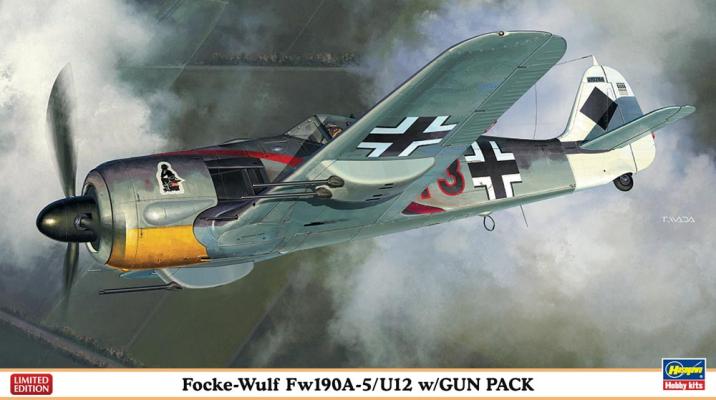I won’t go into the history of the Mk.IX Spitfire, but let’s get right to the kit. It comes packaged in a sturdy large box with a flat black cove complete with a beautiful gold Spitfire sporting two beer barrels under the wings. On the sides are full color renditions of all the decal options. The box top itself is a piece of art that would look really good framed next to the Bf-109E box top.
What's New
I always like to add figures to my builds to obtain a sense of scale. ICM has provided some of the best figures in plastic for some time. Their latest release is aimed at Father Winter and the German Luftwaffe.
They come packaged in a sturdy cardboard box with a beautiful painting of the figures on the front of the box top. A single sprue of light tan plastic is packed in a re-sealable plastic bag. Five figures and various components of a German airfield are included on the sprue. I could find no flash, and the faces, which are the basis of a good figure, are beautifully rendered.
Quickboost has always offered quick, easy, and inexpensive ways to upgrade your kits. The latest offering is a set of hollowed-out exhausts for the Academy Spitfire Mk.XIV. Molded perfectly in light grey resin, these two banks of exhausts feature exquisitely opened ends. They are drop-in replacements for the kit parts. Removal is easy enough from the pour blocks. Since the attachments are on the inside, there is no need even to clean them up.
Highly recommended.
Thanks to Quickboost and IPMS/USA for the review parts.
Nowhere in the world has the clash of East vs. West hardware been more hard fought than the Middle East. Soviet arms were first supplied to Egypt in the 1950s. Since then, Soviet hardware as flourished throughout the region. This hardback, detailing such Soviet-supplied arms in the form of warplanes, is printed on high quality paper with over 375 photos, most being in color. The book is broken down into chapters by country, including Egypt, Iran, Iraq, Israel (yes, Israel too), Jordon, Lebanon, Palestine, Syria, UAE, and Yemen.
The German Kriegsmarine developed the Schnellboot (or S-boot) as a weapon of war to be used by elite sailors. As a testament of their skillfully trained men and excellent design, the S-boot flotillas were able to deliver offensive actions as late as April, 1945.
This book is devoted to the description of the main characteristics and features of the following classes: S-1, S-2, S-7, S-14, S-18, S-26, S-30, S-38, S-100, S-151, and the LS class, which was a “midget” S-boot used mainly from auxiliary cruisers. For each class, there are line drawings and pictures (most of them in half-page size, very clear and sharp) illustrating the characteristics of each class.
I’ve loved Plusmodel’s Aero Line 1/48th scale series of resin figures since reviewing the first one a while back. This one is no different. With the recent release of the Eduard and Great Wall Hobby MiG-29s, this figure couldn’t come at a better time.
Packaged in a plastic bubble pack, this perfectly cast resin figure is molded in light grey with no blemishes anywhere. It has a minimal amount of flash around the whole figure that literally just falls off when touching it. Clean up is quite easy. This figure is a single piece with a pilot wearing a flight helmet. He has a hand in his pocket and the other one at his side holding his oxygen mask. The carving of these figures is impressive. The face is the most important facet of any figure, and these Aero Line figures are perfect. The proportions of the whole figure look absolutely realistic. The pour block is easily removed with a razor saw. The single piece ensures that there are no gaps anywhere.
Quickboost now offers a pair of resin engine cowlings for the 1/72 scale Italeri Mk.IV/V Hudson kit. The Quickboost cowlings are one-piece moldings that are designed to be drop-in replacements for the kit’s two-piece cowlings. After the engines are attached to the nacelles, the one-piece cowlings simply slide over the engines. There does not appear to be any effort on Quickboost’s part to improve upon the excellent details molded into the kit parts. Instead, the purpose of these replacement cowlings is simply to ease kit construction by avoiding the need to assemble the pieces and clean up the two seams along the centerline of each of the cowlings when the kit parts are used, thus avoiding the need to replace/rescribe details. See the comparison photo below of the Quickboost cowling (on the right) to the Italeri kit’s two-piece cowling parts (on the left).
During WWII, the French could not design a good-looking aircraft to save their nation; however, that changed in the post-war years. The delta wing Mirage series are beautiful aircraft based on delta wing research from Germany. Utilizing the powerful J79 engine the Kfir was a powerful fighter bomber. The C2/C7 had canards for added maneuverability, as well as more powerful avionics.
This is my first Kinetic kit, and I must say upon opening up the sturdy two-piece cardboard box I was impressed by the presentation. The kit is molded with over 180 light grey plastic parts with finely engraved panel lines. Kinetic seems to have captured the looks of the real thing. Besides the two different versions of the aircraft, there are other options – flaps up or down, canopy open or closed, airbrake opened or closed. Then there are the armament options – cluster bombs, Mk-82s, Python air-to-air missiles, fuel tanks, and all the pylons to hold them.
I’ve always loved the look of the Fw-190A-5/U12. Designed with two cannon pods containing two cannons each, it’s one mean machine. For those of us who are old enough to remember, we had the Monogram Fw-190 in the ‘70s, and in that kit they included the gun pods. While not totally accurate, it did make an impression on a little red headed kid. I built it with my kid. Fast forward a few years (okay, so more than a few), and we are blessed with accurate Fw-190s all around, but no U12 versions…until now.
Hasegawa’s Fw-190 kits are easy to build and really accurate. Inside this one, there are five sprues of light grey plastic with no flash or blemishes. The panel lines are recessed and display typical Hasegawa fine quality. Amazingly, the parts count is low at 81 pieces. A sprue of clear is also provided. Some poly caps are included for the prop. This makes a very good A-5 version.
This is without a doubt the best aircraft kit I have ever built. Wingnut Wings has produced an absolute wonder of a kit in this Sopwith Snipe.
Upon opening the sturdy box, one finds six grey sprues, one clear sprue, and a photo etch fret. In addition, there is a very colorful and complete 23-page book of instructions with color photos and actual WW I photos of several Snipes.
To begin, I assembled the cockpit which consists of over 30 parts, not counting the rigging wires. When complete, this is a real gem that should really be displayed alone. It is a shame that it has to be shut up inside the fuselage as not much can be seen once installed. I hope that Wingnut Wings will produce kits of just their cockpits. The instructions for the cockpit are color drawings and color photos of the real cockpit. Can’t beat that.
Next came the 13-piece engine. This also is a real beauty.

